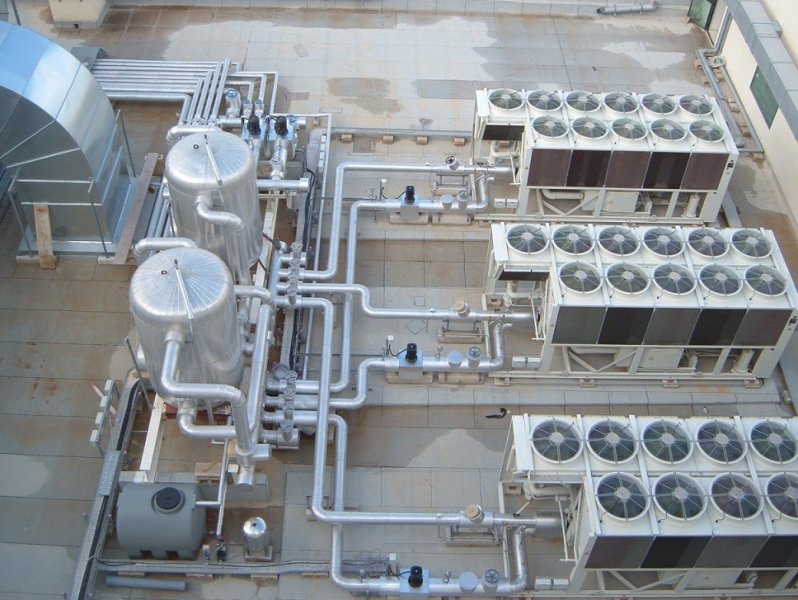In the ever-evolving world of engineering, innovation is the key to staying ahead of the curve and meeting the complex
In the ever-evolving world of construction, innovative building techniques have gained prominence for their ability to deliver both efficiency and sustainability. One such innovation that has been making waves is Structural Insulated Panels (SIPs), often referred to as SIP panels. These panels, constructed by sandwiching a layer of foam insulation between two structural facings, offer a multitude of advantages in terms of thermal performance, speed of construction, and resource efficiency. As we embark on this journey to explore the secrets of structural engineering for SIP panel structures, we’ll uncover the specifications and benefits of SIP panels, before delving into essential tips for structural engineering in this context.
The Power of SIP Panels: Specifications and Advantages
Before we dive into the realm of structural engineering, let’s establish a solid understanding of what SIP panels entail and why they’ve become such a game-changer in the construction industry.
SIP Panels: A Closer Look
Structural Insulated Panels (SIPs) are composite building materials comprising three key layers:
- Outer Facings: Typically made of oriented strand board (OSB) or plywood, these provide structural support to the panel.
- Insulating Core: A layer of foam insulation – often expanded polystyrene (EPS) or polyurethane – sits between the outer facings. This core is the secret to the exceptional insulating properties of SIP panels.
- Adhesive: A strong adhesive binds these components together to form a robust panel.
The resulting SIP panels are renowned for their structural integrity and outstanding thermal performance. But that’s just the tip of the iceberg.
Advantages of SIP Panels
1. Exceptional Insulation:
SIP panels deliver superior insulation, minimizing heat loss and maintaining comfortable indoor temperatures. This can lead to significant energy savings and reduced environmental impact.
2. Speed of Construction:
SIPs are known for their efficiency. The prefabricated nature of these panels speeds up the construction process, saving time and costs.
3. Sustainability:
The resource-efficient design of SIP panels, along with their energy-saving properties, aligns perfectly with sustainable building practices. Reduced energy consumption contributes to a smaller carbon footprint.
4. Strength and Durability:
SIP panels are engineered to provide robust structural support. Their strength and resistance to various environmental factors make them a reliable choice for both residential and commercial projects.
Now that we’ve laid the foundation for understanding SIP panels, let’s delve into the role of structural engineering in optimizing these remarkable building components.
Structural Engineering Tips for SIP Panel Structures
Structural engineering for SIP panel structures is a specialized field that requires a unique set of considerations and expertise. Here, we’ll unveil invaluable tips to ensure the structural integrity and safety of projects using SIP panels.
1. Load-Bearing Analysis
Before embarking on any SIP panel project, comprehensive load-bearing analysis is essential. Structural engineers must assess the anticipated loads, both vertical and lateral, to determine the appropriate panel thickness and spacing. This analysis ensures that the SIP panels can support the intended loads without compromising structural integrity.
2. Seismic Considerations
If your project is located in a seismic-prone region, as is often the case in California, seismic design and retrofitting are paramount. SIP panels can be designed to withstand seismic forces, but this requires a nuanced approach to ensure that the building remains safe during earthquakes.
3. Connection Details
The connections between SIP panels play a pivotal role in the structural integrity of the building. Engineers must meticulously design the connections to ensure they can withstand both the vertical and lateral loads. This includes fasteners, adhesives, and other joining methods.
4. Thermal Bridging Mitigation
One of the primary advantages of SIP panels is their exceptional insulation properties. However, thermal bridging, where heat escapes through the connections and fasteners, can diminish their effectiveness. Structural engineers must employ innovative solutions to mitigate thermal bridging, ensuring that the building remains energy-efficient.
5. Moisture Management
Proper moisture management is critical, particularly in regions with varying climate conditions. SIP panels are sensitive to moisture, and structural engineers must implement strategies to prevent moisture infiltration and safeguard the integrity of the panels.
InnoDez: Your Partner in SIP Panel Structural Engineering
As a renowned structural engineering firm, InnoDez is at the forefront of SIP panel structural engineering. We bring a wealth of expertise to the table, backed by a proven track record in optimizing SIP panels for a wide range of projects, from residential homes to commercial buildings.
Our commitment to engineering excellence, sustainability, and innovation ensures that every project benefits from cutting-edge solutions that maximize the advantages of SIP panels. When you partner with InnoDez, you’re choosing a reliable ally in realizing the potential of SIP panel structures.
In the next sections of this blog series, we will delve deeper into the intricacies of SIP panel structural engineering, offering insights and tips that can help your project thrive in an era where sustainability, efficiency, and structural integrity are paramount.
Stay tuned for our next installment, where we’ll explore load-bearing analysis and seismic considerations in greater detail. Together, we’ll unlock the secrets of structural engineering for SIP panel structures and pave the way for a future where innovation and sustainability reign supreme.
In the exciting world of construction, SIP panels are a beacon of innovation. These Structural Insulated Panels are revolutionizing the way we build, offering unparalleled insulation and structural integrity. But like any construction method, structural engineering plays a pivotal role in optimizing the potential of SIP panels. In this series, we’ll uncover the secrets of structural engineering for SIP panel structures, from load-bearing analysis to seismic considerations and beyond. Join us as we embark on a journey to unlock the full potential of SIP panels in the realm of structural engineering. Together, we’ll build a future where efficiency and sustainability thrive.




About Author
InnoDez